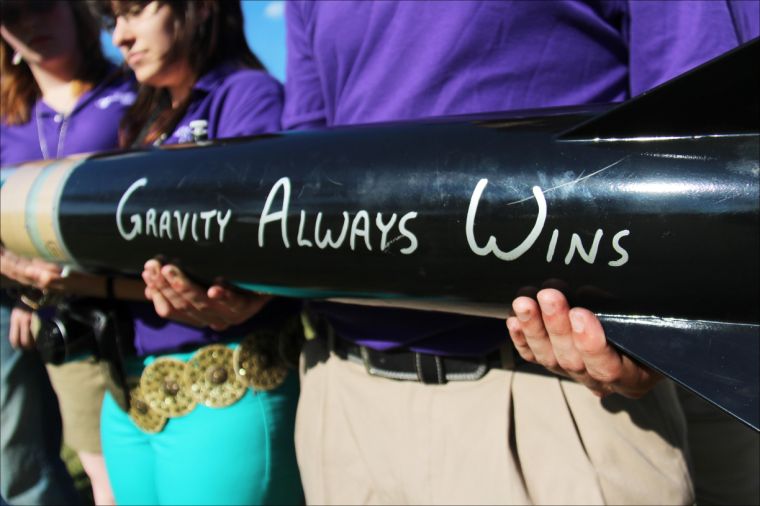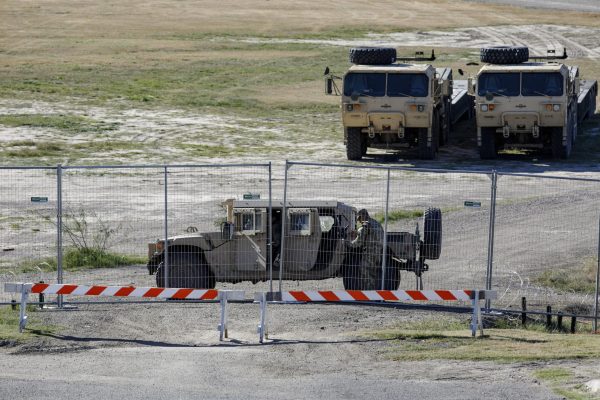Aeronautical team; rocket scientists of tomorrow
May 21, 2013
Launching 5,311 feet off the ground, the Tarleton Aeronautical Team’s rocket was accurate and stable enough to finish third place in the nation at NASA’s University Student Launch Initiative (USLI).
“The goal was to be at exactly 5,280 feet,” publication director Sawyer Baldridge said. “Our rocket was the fifth closest to the exact apogee. During test launches we achieved altitudes as accurate as two feet off the exact mile mark.”
Competing for the first time, Tarleton was also named Rookie of the Year and broke a record with the highest finishing team in the history of the competition.
“Many schools send senior aeronautical engineering students to compete every year,” Baldridge said. “The rookie of the year award is presented to the first year team that performs the best at the competition. According to Edward Jeffries of NASA, ‘Tarleton has done an outstanding job this year.'”
The only two teams to beat Tarleton were from Vanderbilt University and the University of Louisville who came in first and second place respectively. Other teams competing included Penn State, Notre Dame, Georgia Tech and Virginia Tech.
“We knew we competed well and worked as hard as any team out there,” Baldridge said. “NASA periodically sent statistics regarding scoring on specific sections of the competition, but it never said blatantly what place any teams were in on any section or if the top teams were all consistently scoring high. We felt confident that we would finish among the top teams, and we were humbled and gratified in our efforts to do so.”
In preparation for the contest, team members from different majors worked with an interdisciplinary approach to design a rocket and payload.
“We have shown we have some of the best students in the country,” mentor and mathematics professor Dr. Bowen Brawner said. “They out-researched, out-designed, and out-built teams from the top universities. It was no surprise to me that we did this well. I mentored the team which consisted of 13 mathematics, engineering, physics, and computer science students. This diversity provided the team different approaches to the technical challenges they faced. We also had great team leadership from Dustin Neighbors who keep the team working non-stop for nine months.”
The launch happened on April 21 at Bragg Farms in Toney, Ala., near NASA’s Marshall Space Flight Center in Huntsville.
“Competition day was the fruition of all of the team’s hard work,” Baldridge said. “It was the highest sense of confidence, nervousness, and excitement I’ve ever felt simultaneously.”
Teams were evaluated by NASA judges on the rocket design based on a series of technical design reviews, the results from the rocket’s flight including the operation of the payload and the altitude.
“Each of these students had impressed me in ways that I would not have seen in the classroom,” Dr. Brawner said. “The whole project is very complicated and very dangerous. Along with all the computers, sensors, and wiring on board the vehicle, there is a large amount of black powder and Ammonium Perchlorate. The same fuel used for the Space Shuttle boosters. We like to joke that no one lost any fingers.”
Also, the team was judged on the written report and its outreach activities including website documenting the experience and local educational engagement campaigns to share enthusiasm for rocketry.
“I edited and formatted roughly 1,000 pages of documentation for consistency, grammar, and conventions throughout the course of the project,” Baldridge said. “Editing sessions that lasted upwards of 30 continuous hours affirmed my confidence that I am an extremely dedicated worker, and I have what it takes to benefit a team in any discipline in my career.”
After the launch, the team was awarded at the ceremony in Ala. Tarleton received the Science Mission Directorate Payload Award for the most creative and innovative payload design while maximizing safety and science value, the Best Team Spirit Award, a peer award voted on by all the rocket teams and honorable mention in the educational outreach award. Also, the team was presented with a $2,000 oscilloscope.
“I could tell you something amazing about each one of these students,” Dr. Brawner said. “They are tomorrows mathematicians, engineers, computer scientists, and yes rocket scientists.”
The Tarleton Aeronautical team consists of:
Dustin Neighbors – Project Manager, Lead Engineer
Jake Rhodes – Lead Engineer, Technical Editor
Blake Lohn-Wiley – Safety Officer, Technical Research Analyst
Billy Fournier – Draftsman, Electronics Engineer
John Phillips – Chief Programmer, Simulation Data Analyst
Amber Dayhare – Lead Recovery Systems Engineer
Jancie Bateman – Educational Outreach Coordinator
Chelsea Ketchum – Draftsman, Web Design, Educational Outreach Officer
Lou Fowler – Educational Outreach Officer
Bert Hess – Structural Engineer, Electrical Engineer
Taylor Hutyra – Structural Engineer
Todd Byers – Structural Engineer
Jacob Seldine – Lead 3D Model Specialist
Shelby McKnight-Scott – Public Relations
Jade Rodriguez – Historian
Bryan Walker – Draftsman, Structural Engineer
Sawyer Baldridge – Publication Director
Team Mentors:
Dr. Bowen Brawner, Professor
Mathematics Department
Pat Gordzelik, Tripoli Vice President
Tripoli Certified Mentor
Dr. Bryant Wyatt, Department Head
Mathematics Department





